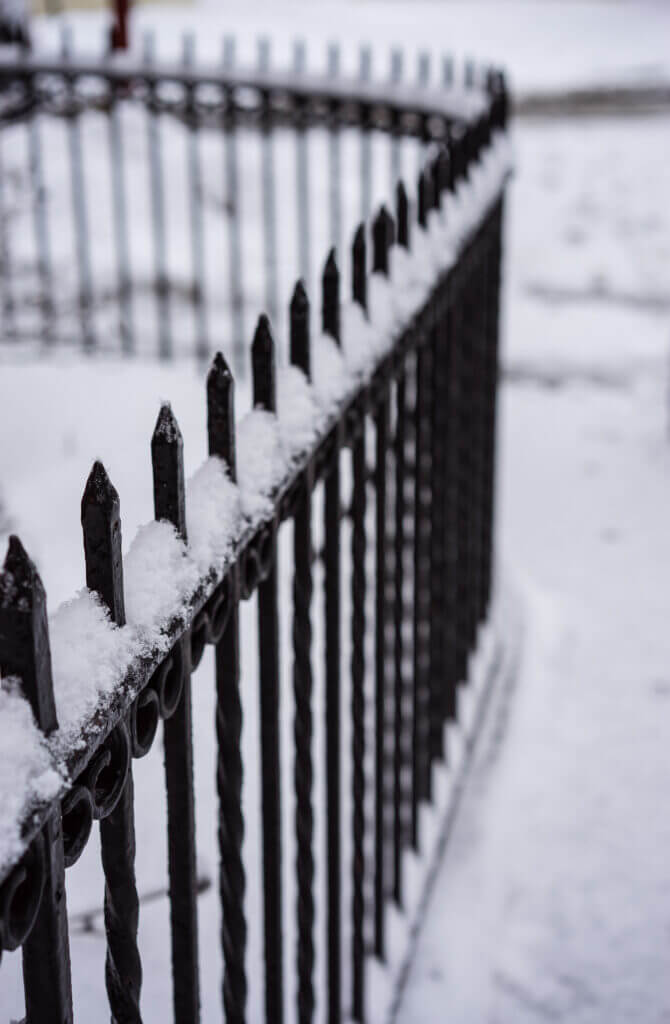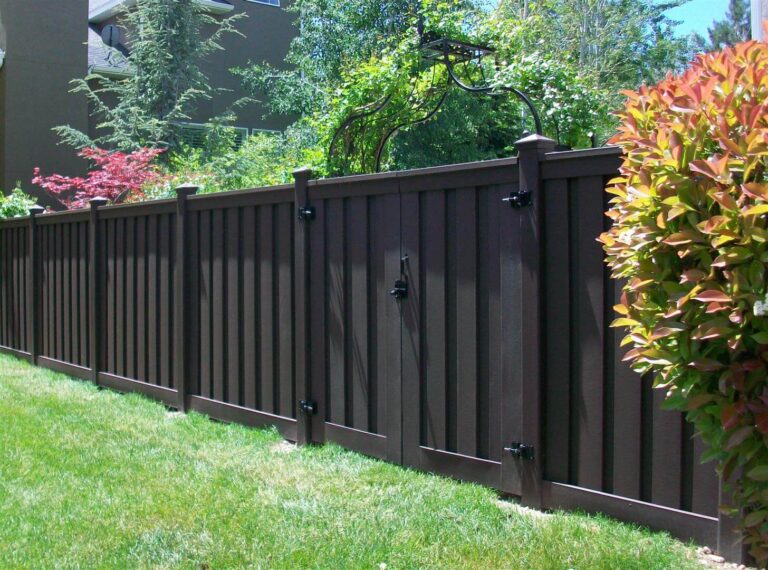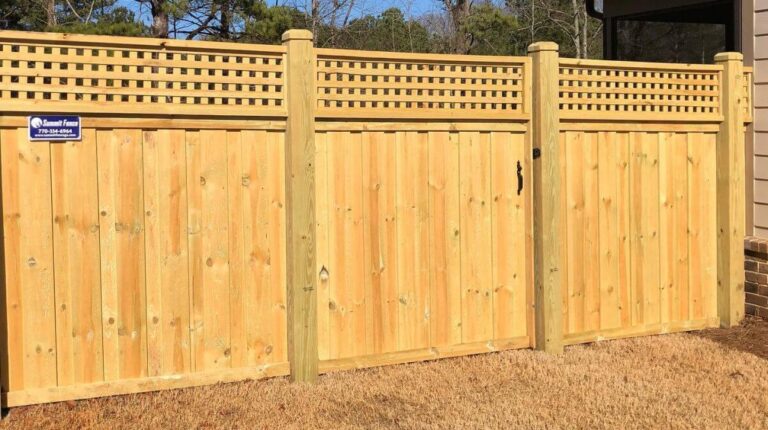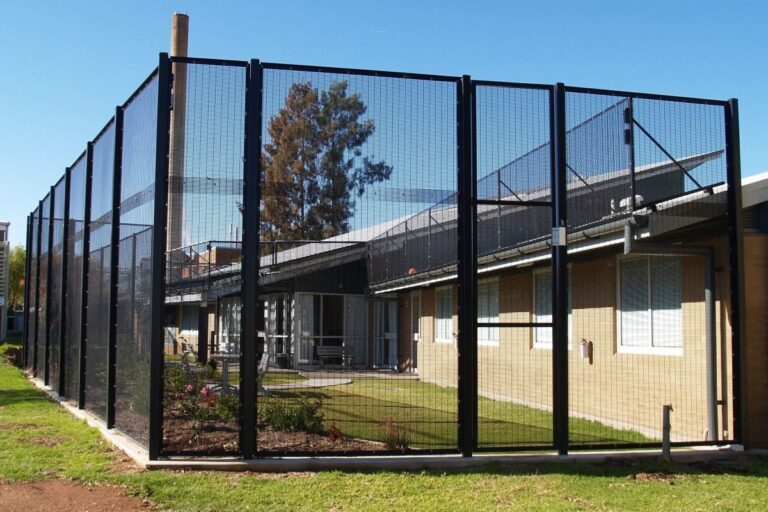To winterize your fence, consider applying a weatherproof sealant and inspecting for any damage or rot that needs repair. Winter can be tough on fences, with cold temperatures and inclement weather causing wear and tear.
As the season approaches, it’s essential to take steps to protect your fence and ensure it remains in optimal condition.
By following some simple winterizing tips, you can prolong the life of your fence and prevent costly damage.
We’ll discuss effective strategies for preparing your fence for the winter months, including applying a weatherproof sealant, inspecting for damage, and reinforcing weak areas.
Whether you have a wooden, vinyl, or metal fence, these tips will help you maintain its integrity and strength throughout the winter season.

Assessing The Current Condition
Assessing your fence’s condition before winter is key. While inspecting for damage and cleaning are important, Fencing San Mateo offers professional expertise to ensure your fence is winter-ready.
Their team specializes in identifying and fixing potential issues, and extending your fence’s durability.
Their services, ranging from minor repairs to comprehensive maintenance, are tailored to your fence’s specific needs.
With Fencing San Mateo, your fence will not only withstand winter’s challenges but also retain its aesthetic appeal.
Inspecting For Damage
Begin by visually inspecting your fence for any signs of damage, such as cracks, dents, or missing components.
Look for areas where the paint or stain may have worn away, leaving the wood vulnerable to moisture and deterioration.
Checking For Rot Or Decay
Probe the wood with a screwdriver to check for soft spots, which could indicate rot or decay.
Pay close attention to areas that are frequently exposed to moisture, as they are more susceptible to deterioration.
Evaluating Loose Or Broken Boards
Check for loose or broken boards that compromise the structural integrity of the fence. Ensure that all boards are securely fastened and replace any damaged ones to prevent further deterioration.
Cleaning The Surface
Prepare the surface of your fence for winterization by cleaning off any dirt, grime, or mildew.
Use a gentle soap or wood cleaner and a brush to scrub away any buildup, and rinse the fence thoroughly with a hose.
Removing Dirt And Debris
Clear away dirt and debris from around the base of the fence to prevent moisture accumulation and potential damage.
Trim back any overgrown vegetation that may be encroaching on the fence.
Power Washing Techniques
If your fence is particularly dirty or stained, consider using a power washer to clean the surface more effectively.
Be sure to use a low-pressure setting to avoid damaging the wood, and maintain a safe distance while washing.
Applying Protective Measures
Winter can take a toll on your fence, so it’s essential to apply protective measures to ensure its longevity and durability.
Applying the right sealant, choosing weather-resistant options, opting for eco-friendly sealants, and adding insulation are crucial steps in preparing your fence for the harsh winter months.
Choosing The Right Sealant
When selecting a sealant for your fence, it’s important to consider the weather conditions in your area.
Water-based sealants are ideal for areas with high humidity, while oil-based sealants provide excellent protection against UV rays and extreme temperatures.
Ensure that the sealant is specifically formulated for outdoor use to withstand the winter elements.
Weather-resistant Options
Opting for weather-resistant sealants, such as polyurethane-based products, can provide exceptional protection against moisture, frost, and snow.
These options create a barrier against water penetration, preventing the fence from warping, cracking, or rotting due to winter conditions.
Eco-friendly Sealants
For environmentally conscious homeowners, there are eco-friendly sealants available that offer superior protection without harmful chemicals.
Look for low-VOC (volatile organic compounds) or water-based sealants that are biodegradable and gentle on the environment.
Adding Insulation
Insulating your fence can help regulate temperature and minimize heat loss during the winter.
Foam board, fiberglass, or cellulose insulation are popular options for fence insulation, providing a barrier against cold air and wind, especially for wooden or metal fences.
Types Of Insulation Materials
| Material | Characteristics |
|---|---|
| Foam Board | Lightweight and moisture-resistant |
| Fiberglass | Effective thermal insulation |
| Cellulose | Eco-friendly and excellent sound insulation |
Installation Techniques For Different Fence Types
- Wooden Fences: Apply the insulation material between the rails and posts, ensuring a snug fit to minimize gaps.
- Metal Fences: Use insulation tape or foam sleeves to wrap around the metal poles or bars, providing a protective layer against the cold.
- Vinyl Fences: Install foam strips or insulation boards along the interior surface of the fence to retain warmth and prevent cracking.
Preparing For Harsh Weather
Snow And Ice Maintenance
During the winter months, it’s essential to stay on top of snow and ice maintenance for your fence.
Clearing the snow off the fence will prevent excess weight and strain, reducing the risk of damage.
Using salt or deicing solutions can help to prevent ice buildup on the fence and keep it in good condition.
Clearing Pathways And Driveways
It’s crucial to clear the pathways and driveways around your fence to ensure easy access and prevent any potential damage.
Regular shoveling and salting can help maintain safe and clear pathways, reducing the risk of accidents or damage to the fence.
Preventing Ice Buildup On The Fence
To prevent ice buildup on the fence, consider using weatherproofing products to create a protective barrier.
Applying a protective sealant can help prevent moisture from seeping into the wood or metal, reducing the risk of ice buildup and potential damage.
Wind Protection
Strong winds can pose a threat to the stability of your fence during the winter. Installing windbreakers or permeable barriers can help reduce the impact of strong winds, protecting your fence from potential damage.
Reinforcing The Fence’s Stability
Inspect your fence for any signs of weakness or damage and take necessary repair measures to reinforce its stability.
This may include tightening loose screws, replacing damaged panels, or reinforcing weak sections to ensure the fence can withstand harsh weather conditions.
Creating Windbreaks With Natural Elements
Utilizing natural elements such as shrubs, trees, or hedges strategically around the perimeter of the fence can help create additional wind protection.
These natural barriers can minimize the impact of strong winds, providing added stability and protection for your fence.

Frequently Asked Questions
How Can I Protect My Fence From Winter Damage?
To protect your fence from winter damage, consider applying a weatherproof sealant and inspecting for any loose or rotting boards.
What Are The Best Materials For Winterizing A Fence?
For winterizing a fence, consider using pressure-treated wood, vinyl, or metal materials, which are durable and resistant to harsh weather conditions.
When Is The Best Time To Winterize My Fence?
The best time to winterize your fence is before the cold weather sets in, typically in late fall or early winter, to ensure optimal protection.
Conclusion
As winter approaches, it’s crucial to prepare your fence for the harsh weather ahead. By following these tips for winterizing your fence, you can protect it from damage and ensure its longevity.
From inspecting and repairing to applying a protective coat, taking these steps will help your fence withstand the winter months.
Keep your fence in top shape with these simple yet effective strategies.







